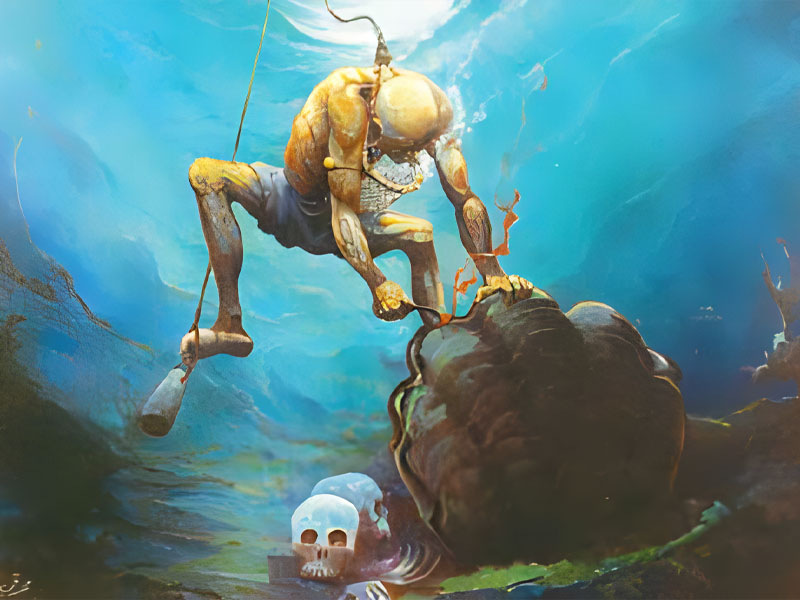Myths and folktales about sea creatures in Bahrain
Issue 33

By Husein Mohammad Husein
Mythical creatures, mythological animals and mythical beings are widely spread concepts. They can be found in all known cultures, and each culture has at least one specific mythical creature. Every culture includes people who do not believe in the existence of these mythical creatures, but there are always others who believe in their existence, especially since myths have become part of the collective folk memory.

In books about heritage and mythology, we find different legendary creatures that are part human and part sea creature. In Arab heritage, there are water nymphs and mermaids that are similar to the Draya in Persian heritage, to the mermaids and mermen of Western culture, and to the Sirens of Greek mythology. These myths originated with the seal, specifically the monk seal.
These myths evolved when stories were written down, and secondary legends were created from the old ones. The ‘bride of the sea’ and the ‘sea nymph’ are terms that do not exist in Arab heritage; they were invented by common people and made popular by the media. Some have even connected these myths to the dugong or sea cow. Some of these myths made their way into the folk culture of Bahrain and the Arabian Gulf, resulting in a legendary creature known as ‘Bu Draya'.
Common people in Bahrain and the Gulf believe in the existence of ‘Bu Draya', which originated with a creature known in Persian as the ‘King of Draya’ (the king of the sea).
The myth of the sea girl was based on the dugong. Its ancient scientific name is Halicore, which is derived from two Greek words meaning ‘sea nymph’, not ‘sea bride’. The dugong is known as a sea cow in the Arabian Gulf, a name mentioned in books of Arab heritage.
In the Arabian Gulf, folk memory abounds with knowledge associated with fish; many legends, anecdotes and proverbs are associated with types of fish in Bahrain and throughout the Gulf. Some folk myths were attempts to explain phenomena that sailors witnessed but did not understand, so they tried to explain them with fictional tales or legends. The folktale’s role is not limited to the explanation of a phenomenon, it also includes a lesson and wisdom; some tales were reduced to a proverb that serves the same purpose.
In this study, we will attempt to collect the largest number of folk myths and folktales associated with fish in Bahrain, and to compare them to similar tales and legends from other parts of the Arabian Gulf.



































































